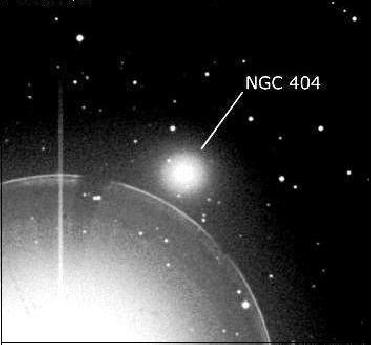
NASA's Galaxy Evolution Explorer NGC 404
WASHINGTON, DC (BNS): NASA's Galaxy Evolution Explorer has provided new insight into the formation and evolution of galaxies. The explorer has uncovered an eerie creature called NGC 404, which is a kind of galaxy known as 'lenticular'.
Unveiling the mystery, NASA said Lenticular galaxies are disk-shaped, with little ongoing star formation and no spiral arms. NGC 404 became known to astronomers as the 'Ghost of Mirach' after they saw lenticular lies hidden in the glare from a red giant star called Mirach. When the Galaxy Evolution Explorer spied the lenticular galaxy in ultraviolet light, a spooky ring materialised.
David Thilker of Johns Hopkins University in Baltimore said, “One was under the impression that this celestial ghost was essentially dead. But we've been able to show that it has an extended ring of new stars. The galaxy has a hybrid character in which the well-known, very old stellar population tells only part of the story. It's like the living dead."
During the space telescope's all sky survey, Thilker and his team spotted the Ghost of Mirach in images. This is NASA's low-cost mission launched in 2003. It helps in viewing the entire sky in ultraviolet light. This is because the Earth's atmosphere absorbs ultraviolet photons.
Mark Seibert of the Observatories of the Carnegie Institution of Washington in Pasadena,California, said before the Galaxy Evolution Explorer image, NGC 404 was thought to contain only very old and evolved red stars distributed in a smooth elliptical shape, suggesting a galaxy well into its old age and no longer evolving significantly. "Now we see it has come back to life, to grow once again," he said.
The findings indicate that the evolution of lenticular galaxies might not be complete. "They may, in fact, continue to form stars in a slow, piece-meal fashion as they suck the raw, gaseous material for stars from small, neighbouring galaxies. It seems the Ghost of Mirach might act more like a vampire than a ghost," NASA said.















The Indian Air Force, in its flight trials evaluation report submitted before the Defence Ministry l..
view articleAn insight into the Medium Multi-Role Combat Aircraft competition...
view articleSky enthusiasts can now spot the International Space Station (ISS) commanded by Indian-American astr..
view article